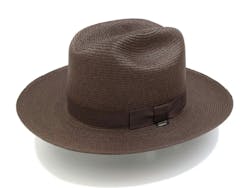Head to Toe: Keeping Up with Police Footwear, Headwear Trends
In the ever-evolving world of law enforcement gear, the footwear and headwear worn by officers play a critical role in their comfort and job performance. Recently, industry professionals from leading brands shared their insights on emerging trends and the enduring popularity of classic designs. Their feedback reveals a dynamic market that blends innovation with tradition, catering to the diverse needs of modern law enforcement.
This article appeared in the September/October issue of OFFICER Magazine. Click Here to subscribe to OFFICER Magazine.
The Changing Landscape of Law Enforcement Footwear
Footwear has always been a cornerstone of an officer’s uniform, providing essential support and protection during long shifts. However, the market is witnessing a shift as newer officers demand more from their boots and shoes.
“Year after year, it seems that fewer departments are using formal bid contracts,” said Jason Taran, Vice President of Business Development at Thorogood. There is a sense that more officers are on their own to purchase ‘black’ shoes or boots, with specs often going out the window. This shift has opened the door to a wider variety of products, from traditional duty boots to more casual, athletic footwear.
Thorogood has seen consistent demand for its classic 8” side zip jump boot, particularly among specialized units that value its reliability. Yet, Taran noted a growing trend towards casual, athletic shoes being sold into law enforcement, a sentiment echoed by others in the industry. “We continue to see more casual, athletic shoes sold into law enforcement. With that said, we have a loyal following for our true duty boots,” he added, highlighting the ongoing balance between innovation and tradition.
This trend towards lighter, more versatile footwear is also evident in the Pacific Northwest. Richard Cummings of 911 Supply observed, “The days of selling the heavy-duty boots that last ten years are all but gone. The new young generation of law enforcement wants lightweight, waterproof boots such as Danner’s Tachyon and Salomon’s XA Forces.” Cummings pointed out that many agencies now provide annual boot allowances, allowing officers to upgrade their footwear regularly rather than invest in long-lasting but heavier options.
David George, Vice President of Public Safety at Read’s Uniforms, has noticed a similar trend, particularly in warmer climates. “Although there is still good demand for more traditional tactical boots, the biggest trend we’ve seen is the move to a shoe product versus a boot,” he explained. The desire for comfort and modern aesthetics drives officers to opt for low-cut, tennis-style shoes from brands like Merrell and Under Armour, especially among younger officers who prioritize comfort and style.
However, the market isn’t just shifting towards lighter, more casual options; it’s also becoming more price-sensitive. Stuart Brooks, Sales Manager of the Public Service Division at Rocky Boots, highlighted this trend, noting that rising raw materials and manufacturing costs are pushing companies to innovate to keep prices competitive. “We’ve had to come up with new and innovative solutions to keep costs down and pass the savings on to the end user,” Brooks said, referencing Rocky Boots’ new Ultra Ops product line, which offers a high-speed design at an affordable price point.
For Brendan Rynne, Senior Category Manager for Footwear at 5.11 Tactical, the focus is on enhancing comfort and performance. “The emerging trend in footwear is officer’s comfort and their performance,” he said. Rynne emphasized the importance of understanding the specific needs of law enforcement officers, who often spend 10-12 hours on their feet while carrying additional weight. “Innovations are where the market is going—how do you help improve LE’s physical health and comfort while on duty?” 5.11 Tactical’s ATLAS platform and the soon-to-be-released A/T Boa Lite are examples of how the brand is addressing these challenges, offering high-performance features tailored to the job’s demands.
Headwear: Tradition Meets Modern Needs
While footwear sees significant shifts towards innovation, headwear in law enforcement remains a space where tradition and modern needs converge. Michael Struk of Graffiti noted that “law enforcement has and continues to be drawn to our baseball caps more than our winter knit caps.” This preference for the tried-and-true baseball cap reflects a broader trend in the industry: maintaining reliable standards while slowly integrating modern touches.
The desire for comfort and breathability is driving changes in the materials and designs of these caps. Cummings states, “We’ve seen many agencies ask for lighter, more breathable ball caps for daily patrol use.”
While the traditional Richardson brand 585 poly/wool FlexFit cap remains popular, there’s a noticeable shift towards Blauer’s FlexRS caps, which offer improved breathability and color retention.
But the most significant shift in law enforcement headwear might be in the realm of customization. George pointed out a growing trend towards modern decorative elements. “The hottest hats for law enforcement are baseball-style caps with lifestyle brands like Richardson and New Era as our best sellers,” he said. What sets these caps apart is the use of silicon, leatherette, and woven patches, which allow for greater design flexibility and a more contemporary look. This trend towards customization reflects a broader desire among younger officers to bring a sense of individuality and modern style to their uniforms.
Despite these modern trends, traditional headwear remains a staple for formal occasions. Cummings noted that Stratton’s traditional Trooper/Deputy campaign-style hats and Bayly’s 8-point dress hats continue to be the go-to choices for agencies, highlighting the enduring respect for formal headwear in law enforcement.
The law enforcement apparel market is at a crossroads where innovation meets tradition. Footwear trends reveal a shift towards lightweight, comfortable, and price-sensitive options, driven by a younger generation of officers who prioritize both functionality and style. Meanwhile, headwear continues to blend the reliability of classic designs with modern customization options that appeal to contemporary tastes.
As the job demands evolve, so too must the gear that officers rely on. The insights shared by industry professionals underscore the importance of adapting to these changing needs while maintaining the integrity and reliability that law enforcement gear has always represented.
About the Author
Rick Levine
Executive Director at NAUMD
Rick Levine is the Executive Director of the NAUMD, a network of uniform, image apparel, and workwear companies created to improve supply chains, innovation, and awareness. Email him at [email protected]





